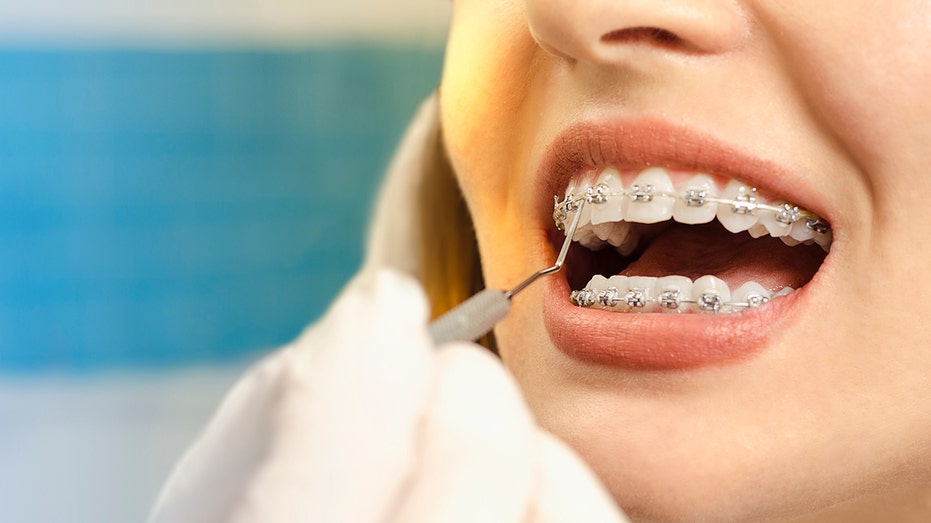Some orthodontists fearful of coronavirus closures' 'detrimental' effects on patient progress
As opposed to general dentistry, orthodontic treatment 'continues in between appointments'
Get all the latest news on coronavirus and more delivered daily to your inbox. Sign up here.
Closures related to novel coronavirus pandemic have prevented orthodontists in states that deem their practice “nonessential” from providing the necessary incremental care needed for braces and aligners, causing some to have concerns about the “detrimental” effects.
“Somebody who's already started orthodontics is in the midst of a treatment. That treatment is dynamic, things are moving. And so if somebody has braces on and they go for an extended period of time without being seen, there can be detrimental effects,” said Manhattan, New York-based orthodontist Dr. Adam Goodman.
HOSPITALS, HEALTH CARE SECTOR REEL FROM CORONAVIRUS DAMAGE
Goodman has owned an orthodontics practice in the city since 1994. Dentists and orthodontists in the state are allowed to see emergency patients but are otherwise still restricted, according to a Syracuse.com breakdown of state mandates.

(iStock)
CORONAVIRUS RESTRICTIONS EASE ACROSS AMERICA
He told FOX Business he’s not referring to just a four-to-eight-week period between when a patient has received treatment, such as when a child leaves for summer camp.
“When you go beyond maybe even two months, then there are several risks. Sometimes the forces that were placed on the braces were excessive because they went beyond what the doctor had expected – they knew that they would be seeing people in April or in late March, and now it might overdo it,” he said. “Some kids don't brush well around the braces. And if they go unchecked, there can be decay or cavities around that develop around the braces if they haven't been monitored.”
CONGRESS HAS FUNNELED TRILLIONS TO VIRUS RELIEF EFFORTS. WHERE IS TTHAT MONEY GOING?
American Association of Orthodontists President Dr. Chris Roberts explained that orthodontics is often different from general dentistry because the treatment for the former “continues in between appointments.”
“Say you need a filling done. You go in and they do the filling and you're done. Orthodontic treatment, the treatment lasts over a longer period of time – a lot of times treatment plans are up to two years,” Roberts told FOX Business. “And when we see patients for appointments, the appliances that we use, either that are fixed braces that are on the teeth or whether it be clear aligners… the appliances are still active, and a lot of them are not self-limiting – they will continue to be active.”

(iStock)
Orthodontics practices in parts of the nation are beginning to reopen their doors. And for those that have not yet been given the green light to do so, the AAO follows the American Dental Association’s determination as to which circumstances warrant an emergency appointment, Roberts said.
“Sometimes teeth can move beyond where we want them to go. They can cause problems with the supporting structures,” Roberts added. “If you continue to move the teeth, move teeth in one direction, they can move too far. That can cause gum problems; that can cause bone loss around the teeth, things that you just don't want to have happen.”
GET FOX BUSINESS ON THE GO BY CLICKING HERE
But the AAO describes COVID-19-related closures as a “hiccup” that should generally not be harmful.
"When patients go back to the office, orthodontists, we're gonna be wearing gowns and face masks, face shields, in certain instances, so it may be a little bit different," Roberts said. "The most important part is the health and safety of the patients and our orthodontics staff members who work in the office, and just the public in general."
In the meantime, any patients who are in pain or believe they have an emergency situation should contact their doctors.




















